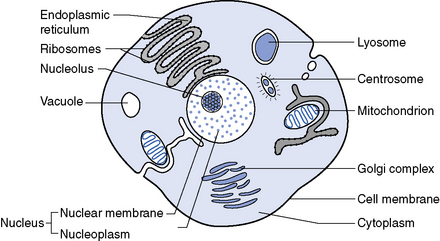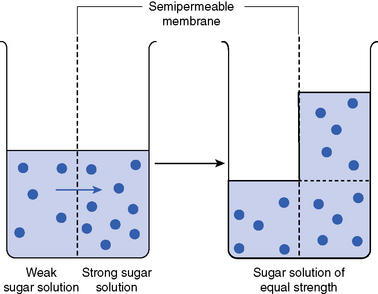2 The cellular level of organization
Structure of a cell
All cells are made of a substance called protoplasm, which is jelly-like, opaque and colourless, and consists mainly of water with other substances in solution (Fig. 2.1).
The plasma membrane (Fig. 2.2) is composed of protein and a substance called phospholipid. The structure of phospholipid molecules, which makes them hydrophobic (repelled by water) at one end and hydrophilic (attracted to water) at the other end, leads to the unique structure of the plasma membrane, a double layer known as a phospholipid bilayer. The protein molecules are embedded in this bilayer and it is the protein molecules that confer the selective permeability on the plasma membrane. The protein molecules can form channels or carriers for the transport of certain substances across the plasma membrane.
Other functions of the protein in the plasma membrane are to act as sites of recognition between cells and to act as receptors whereby substances such as hormones (see Chapter 7) can attach to cells and influence their ability.
Transport processes across plasma membranes
Movement of substances across cell membranes takes place by several processes:
Osmosis
The processes of osmosis and diffusion, whereby water and substances in solution, respectively, move across semipermeable membranes, work across the plasma membrane. If a substance with large molecules, e.g. sugar, is made into a solution and is separated from a weaker sugar solution by a semipermeable membrane, only water will pass through the membrane, from the weaker solution to the stronger solution, because the sugar molecules are too large to pass through. This passage of water across a semipermeable membrane is called osmosis (Fig. 2.3).
< div class='tao-gold-member'>
Stay updated, free articles. Join our Telegram channel

Full access? Get Clinical Tree





